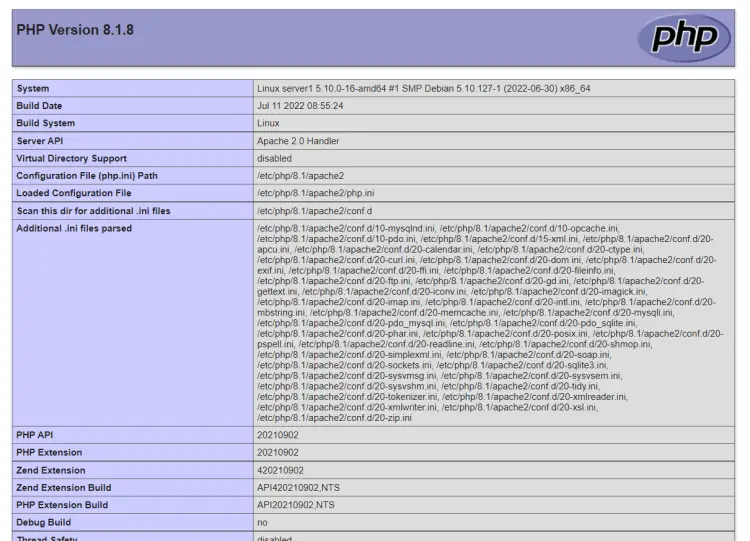How to Specify a Custom php.ini for a Website (Apache2 with mod_php)
This short article explains how to specify a custom php.ini for a website running on Apache2 with mod_php. That way, each website can have it's own php.ini instead of having to use the server's default one.
1 Preliminary Note
I'm using the website www.example.com here with the document root /var/www/web1/web here.
2 Getting Details About Your PHP Installation
We will now create a small PHP file (info.php) in the document root and call it in a browser. The file will display useful details about our PHP installation, such as the used php.ini file.
nano /var/www/web1/web/info.php
<?php phpinfo(); ?>
Now we call that file in a browser (e.g. http://www.example.com/info.php):

As you see, the website is currently using the /etc/php/8.1/apache2/php.ini file.
3 Custom php.ini For a WebSite
I will copy the default php.ini (/etc/php/8.1/apache2/php.ini on Debian/Ubuntu; /etc/php.ini on Fedora/CentOS) to the /etc/php/web1/ directory and make www.example.com use the php.ini from the /etc/php/web1/ directory:
Debian/Ubuntu:
mkdir /etc/php/web1/
cp /etc/php/8.1/apache2/php.ini /etc/php/web1/
Fedora/CentOS:
mkdir /etc/php/web1/
cp /etc/php.ini /etc/php/web1/
(You can now modify /var/www/web1/php.ini to your liking.)
Then open the vhost configuration for the www.example.com website and add a PHPINIDir line to it:
<VirtualHost 1.2.3.4:80> [...] PHPINIDir /etc/php/web1
[...] </VirtualHost>
PHPINIDir must contain the directory where the php.ini file for the website is located.
Restart Apache afterward:
Debian/Ubuntu:
service apache2 restart
Fedora/CentOS:
service httpd restart
Now call the info.php file again in a browser (http://www.example.com/info.php):

The Configuration File (php.ini) Path line should now show the new php.ini.
4 Links
- Apache: https://httpd.apache.org/
- PHP: https://www.php.net/

